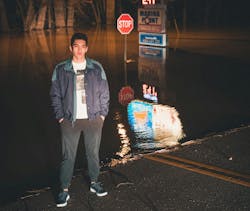Hurricane Harvey hit Houston in August 2017, and was the second-costliest hurricane to hit the U.S., destroying more than 204,000 homes, and dumping more than 1 trillion gallons of rain over the course of four days.
Realtor.com reporter Claire Trapasso traveled to Meyerland, a suburb 10 miles southwest of downtown Houston, to get a lay of the land in terms of homeowner sentiment--whether they're staying, going, and how they handle such painful choices. Storms like Harvey, though they are 100-year or in some cases 500-year storms, are becoming more frequent, and how Houstonians respond to the damage may augur future homeowner sentiment.
Sam Brody, a flood risk reduction professor at Texas A&M University tells Trapasso, "Meyerland is happening all over America. The losses due to flood damage are going to be significantly greater in the future." In other words, writes Trapasso, "you've got a tinderbox ready to ignite."
It's the sound of resilience, one shared with most communities that have withstood natural disasters. Roughly 1,900 of Meyerland's 2,300 homes flooded from Harvey, due in large part to the breach of the Brays Bayou, the 31-mile river that cuts through the region. Despite the very real danger that disaster will strike yet again, many of the badly damaged homes are being rebuilt. Construction permits are taped prominently on almost every window of the blocks closest to the bayou. Some streets are lined with the naked earth of vacant lots, where flooded homes were razed, ready for new homes to be built in their place.
